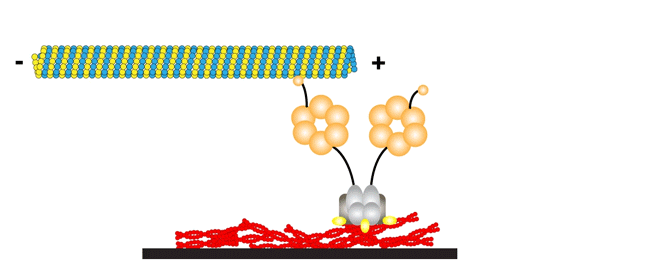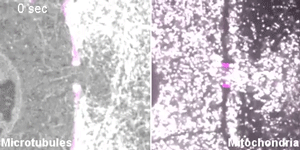
Northwestern Medicine scientists discovered a new and unique transport mechanism within developing egg cells in fruit flies, according to a study published in eLife.
Motor proteins “slingshot” microtubules towards oocytes, creating a current that brings nutrients and molecules to a developing egg cell. This flow transport had previously only been detected in plants, according to Vladimir Gelfand, PhD, the Leslie B. Arey Professor of Cell, Molecular, and Anatomical Sciences and senior author of the study.

“This is a completely new mechanism of biological motion in animals,” said Gelfand, also a professor of Cell and Molecular Biology and a member of the Robert H. Lurie Comprehensive Cancer Center of Northwestern University.
Egg cells, also known as oocytes, arise from stem cells very early in an organism’s lifespan. During the oocyte’s development, specialized “nurse cells” pump proteins, messenger RNA (mRNA) and other components into the oocyte, giving it materials to build the structures necessary for development.
Early in this process, the protein dynein directionally transports other proteins and mRNA by “walking” along microtubule tracks; two “legs” alternately binding and unbinding to the surface of the microtubule with each step, with the transported molecules bound to the motor protein. This is an example of selective transport, required to maintain the oocytes’ cell fate, according to Wen Lu, PhD, research associate in the Gelfand laboratory and lead author of the study.
“The oocyte needs to maintain very specific mRNA to maintain its status as an oocyte,” Lu said. “Once the oocyte is differentiated and needs to grow larger, this selective transport is too slow.”
Indeed, midway through oocyte development, the investigators observed the transport method changing. Instead of motor proteins walking along microtubules, the same motor, dynein, attached to the cortex of nurse cells pushes the microtubules through small canals towards the oocyte. This generates a flow upon which molecules are transported to the oocyte, as if riding a tube down a river.

“It’s the same mechanism as selective transport, but it’s inverted. Instead of components moving on microtubules, microtubules themselves move to the oocyte” Gelfand said.
In the study, investigators placed neutral particles inside the nurse cells and watched as they rode the current towards the oocyte. If the old method of directed transport was still active at this middle stage of development, the neutral particles would stay put, as they don’t bind to the motor proteins moving along microtubules.
Then, the investigators created a chimeric motor protein, taking motor proteins from moss, and attached them to nurse cells. This artificial motor still shuttled microtubules along towards the oocyte, resulting in normal growth for the egg cell.
“It doesn’t matter what is moving microtubules, as long as the flow is in the right direction,” Gelfand said.
This mechanism may be also present in mammals, but Gelfand cautioned that it’s difficult to verify; mammal cells are thicker and more complex, complicating the imaging required to observe transport within cells. In the future, Gelfand said his laboratory will explore exactly when transport switches from selective to non-selective, as there may be a biological trigger that flips the switch.
This study was supported by the National Institute of General Medical Sciences grants R01GM124029 and R35GM131752.






